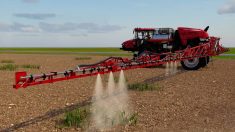Enormous resources are now being poured into commodity price forecasting but a thoughtful paper by the New York Fed casts doubt on whether it is likely to be successful.
In a 2010 working paper on “Commodity prices, commodity currencies, and global economic developments” and now featured on the New York Fed’s website, Jan Groen and Paolo Pesenti ask “how easy it to forecast commodity prices?”
The authors conclude “across our range of commodity price indices we are not able to generate out-of-sample forecasts that, on average, are systematically more accurate than predictions based on a random walk or autoregressive specifications.” In other words, forecasts could not beat a prediction based on the current price or some weighted average of past prices.
Read Also

Guarding against misinformation: Do you believe in house hippos?
Misinformation and disinformation run rampant in today’s digital age. Farmers must be wary of the digital dangers and know how to keep themselves safe.
Groen and Pesenti considered four families of indices and three ways of forecasting them.
The first approach focused on exchange rates from a small group of commodity-exporting countries which derive a substantial portion of output and export earnings from primary products but are too small to exert monopoly power on prices and have free-floating exchange rates (Canada, Australia, New Zealand, Chile and South Africa).
The second and third added a wide range of other theoretically important factors – including macroeconomic variables , commodity fundamentals, and the Baltic Dry Index (ocean freight).
Groen and Pesenti examined the out-of-sample forecasting power of these approaches over five time horizons ranging from one month and three months to two years and compared them with benchmark predictions based on a random walk or an autoregressive process.
For some approaches over some time periods the forecasts performed a little better than predictions based on the benchmarks, but the outperformance was fairly random. Some approaches worked for some indices at some horizons, but not for other indices at other time frames.
“Neither the exchange rate approach nor a broader approach that uses information from larger data sets including both exchange rates and other macrovariables are overwhelmingly successful in predicting commodity price dynamics,” observe the authors.
Perhaps poor performance of exchange-rate and macroeconomic based forecasts was due to the dominance of commodity specific factors in determining returns? The authors therefore consider whether including futures and forward prices for commodities, which encapsulate expectations about specific factors, could improve the predictions.
They warn “futures prices provide, at best, highly noisy signals about future price spot prices” and “ it is unclear whether prices in relatively illiquid segments of the futures market such as longer-dated contracts can be considered unbiased and effective aggregators of information.” In any event, adding futures and forward prices into the models did not improve their performance substantially.
We are left with the humbling conclusion that our ability to forecast commodity prices is no greater than our ability to forecast other aspects of the future. It will not surprise long-standing professionals in commodity markets; the authors have provided statistical proof of what most market participants and observers have long known.
JohnKempisaReutersmarketanalyst














